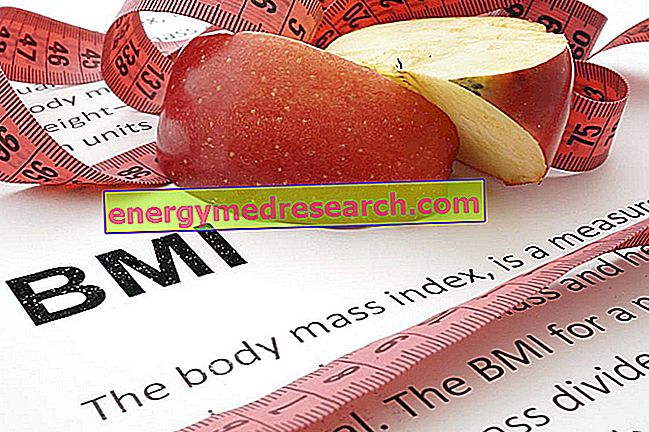The Prime is a simple modification of the BMI system, which consists in the ratio between the actual BMI with the upper normality limit referred to the BMI scale (currently defined BMI = 24.9). By definition, BMI Prime is also the ratio between body weight and the upper normality limit of body weight, calculated on the BMI of 24
Category anthropometry
BMI (from Body Mass Index) is a parameter for evaluating body mass. It is not applicable to children and elite athletes, since it is built on the average of the general population. The BMI is able to identify the subject's underweight or normal-weight or overweight condition, with the sole use of a formula that requires two data: the stature expressed in meters and raised squared, and the fasting weight
BMI and Public Health BMI is generally used as a means of estimating the general body mass, especially of research samples, and can serve indicatively as a means of estimating subjective adiposity. While on the one hand the BMI enjoys excellent ease of use, on the other it has a certain accuracy limit
The medical class and the community of statesmen have highlighted the many limitations of the BMI method. The mathematician Keith Devlin and the association "Center for Consumer Freedom" claim that the margin of error of the BMI is extremely significant, to the point of not even being useful for the evaluation of the state of health
The Prime is a simple modification of the BMI system, which consists in the ratio between the actual BMI with the upper normality limit referred to the BMI scale (currently defined BMI = 24.9). By definition, BMI Prime is also the ratio between body weight and the upper normality limit of body weight, calculated on the BMI of 24
Obesity is considered one of the main causes of premature death throughout the world (especially in the West); in terms of Body Mass Index (BMI), this condition is generally identified with a value equal to or greater than 30 points. In addition to proportionally to BMI, today it is certain that the risk of death tends to increase relative to the shape of the body, in particular to the deposits of abdominal fat
According to a report released in June 2014 by the College of Podiatry in London, the feet of the British are becoming larger and larger. From 1970 to 2014, the average size of female feet has in fact passed from 37 to 38.5, while that of male feet has gone from 42 to 44. The study justifies this increase with the general improvement in nutrition, from which an increase in height and weight is derived, to which even the feet have adjusted, becoming larger
The polar fox ( Alopex lagopus , in the photo) and the Eskimos have something in common. Compared to the desert fox, in fact, the polar fox has small ears, limbs and tail. Similarly, in Eskimos the arms and legs are proportionally shorter than the torso compared to those of black individuals. The reason for these features
If you want to know everything about plicometry visit the following article: PLICOMETRIA E PLICOMETRI
If your goal is to improve the proportions of your body you simply need to get yourself a magic wand and the game will be done! Seriously, building and shaping your body at will is not impossible but very difficult. It is indeed necessary to come to terms with enemy number one, genetics. As usual ..
Standing or height is an anthropometric datum of great importance; not surprisingly, it represents the standard parameter to which many other measures can be related, such as weight, nutrition and body development. Even if it is a routine anthropometric survey, it is very important to respect the correct detection procedure









